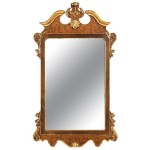Stainless Steel Mirror Finish Process
Stainless steel's inherent corrosion resistance and aesthetic appeal make it a popular choice for various applications, from kitchen appliances to architectural facades. A mirror finish further enhances its visual appeal, creating a highly reflective surface. Achieving this flawless, reflective surface requires a multi-stage process involving mechanical and chemical treatments.
The initial stage typically involves preparing the stainless steel surface. This preparation often begins with grinding. Grinding employs abrasive belts or wheels to remove imperfections like scratches, weld seams, and scale from the base material. The grit size of the abrasive is progressively reduced throughout the grinding process, creating a smoother surface with each pass. This step is crucial for establishing a uniform base for subsequent polishing stages.
Following grinding, the stainless steel undergoes a series of polishing operations. These operations typically utilize progressively finer abrasives. Early polishing stages might involve abrasive belts or wheels, similar to grinding, but with significantly finer grits. Subsequent stages often employ buffing compounds applied to rotating cloth or felt wheels. These compounds contain fine abrasive particles that further refine the surface, removing the finer scratches left by the grinding and initial polishing stages.
The specific sequence and type of abrasive media used in polishing depend on the desired final finish quality and the initial condition of the stainless steel. Factors influencing the selection of abrasives include the alloy composition of the stainless steel, the depth of initial imperfections, and the desired reflectivity of the final mirror finish. Careful selection and application of abrasives are essential for achieving a uniform, high-quality mirror finish without introducing new imperfections.
Electropolishing can be incorporated into the mirror finish process, often following mechanical polishing. This electrochemical process removes a microscopically thin layer of the stainless steel surface, smoothing out minute imperfections and enhancing brightness. Electropolishing also improves the corrosion resistance of the stainless steel by removing surface contaminants and creating a passive chromium oxide layer. This layer effectively protects the underlying material from environmental factors that could lead to corrosion.
Passivation is another chemical treatment often employed after mechanical polishing or electropolishing. This process enhances the naturally occurring passive chromium oxide layer on the stainless steel surface. Passivation typically involves immersing the stainless steel in a nitric acid solution or a citric acid solution. This treatment removes free iron and other surface impurities, allowing the chromium oxide layer to form more completely and uniformly. This enhanced passive layer significantly improves the corrosion resistance of the stainless steel, making it suitable for demanding environments.
Quality control plays a vital role throughout the entire mirror finish process. Regular inspections are conducted at each stage to ensure the surface is progressing as expected. These inspections may involve visual examination, microscopic analysis, and reflectivity measurements. Identifying and addressing any imperfections early in the process prevents them from propagating through subsequent stages, minimizing rework and ensuring a high-quality final product.
Maintaining the mirror finish after processing requires careful handling and storage. Protective films are often applied to prevent scratching and contamination during transport and installation. Regular cleaning with appropriate cleaning agents and techniques is essential for preserving the reflective surface and preventing corrosion. Abrasive cleaners should be avoided as they can scratch the mirror finish. Neutral pH cleaners specifically designed for stainless steel are generally recommended.
The specific process parameters for achieving a stainless steel mirror finish can vary depending on the specific application and desired aesthetic outcome. Factors such as the grade of stainless steel, the initial surface condition, and the desired level of reflectivity influence the selection of abrasive media, polishing techniques, and chemical treatments. A well-defined process, combined with meticulous execution and quality control, is essential for producing a flawless, high-quality mirror finish on stainless steel.
Different industries utilize stainless steel mirror finishes for various applications. In architecture, mirror-finished stainless steel cladding can create striking visual effects on building exteriors. In the automotive industry, it is used for decorative trim and components. The food processing industry utilizes mirror-finished stainless steel for equipment surfaces due to its hygienic properties and ease of cleaning. The versatility of stainless steel mirror finish allows for its incorporation into a wide range of products and applications, contributing both aesthetic appeal and functional benefits.
The cost of achieving a stainless steel mirror finish depends on several factors, including the size and complexity of the part, the initial surface condition, and the desired level of reflectivity. More intricate parts or those requiring significant surface preparation will generally incur higher processing costs. The choice between mechanical polishing, electropolishing, and passivation also influences the overall cost. While mechanical polishing is typically the most cost-effective method, electropolishing and passivation can offer enhanced corrosion resistance and a brighter, more uniform finish, potentially justifying the added expense depending on the application requirements.

Mirror Finish Norton Abrasives

Mirror Finish Norton Abrasives

Mirror Finish Norton Abrasives

How To Polish Stainless Steel Mirror Finish Topson

How To Give Stainless Steel The Right Mirror Finish Thepipingmart Blog

7 Tips For Finishing Stainless Steel

How To Achieve A Mirror Finish On Stainless Steel

Differences In The Appearance Of Stainless Steel Mirror Finish Design Metal Library

How To Sand And Polish Stainless Steel Mirror Finish

7 Tips For Finishing Stainless Steel








